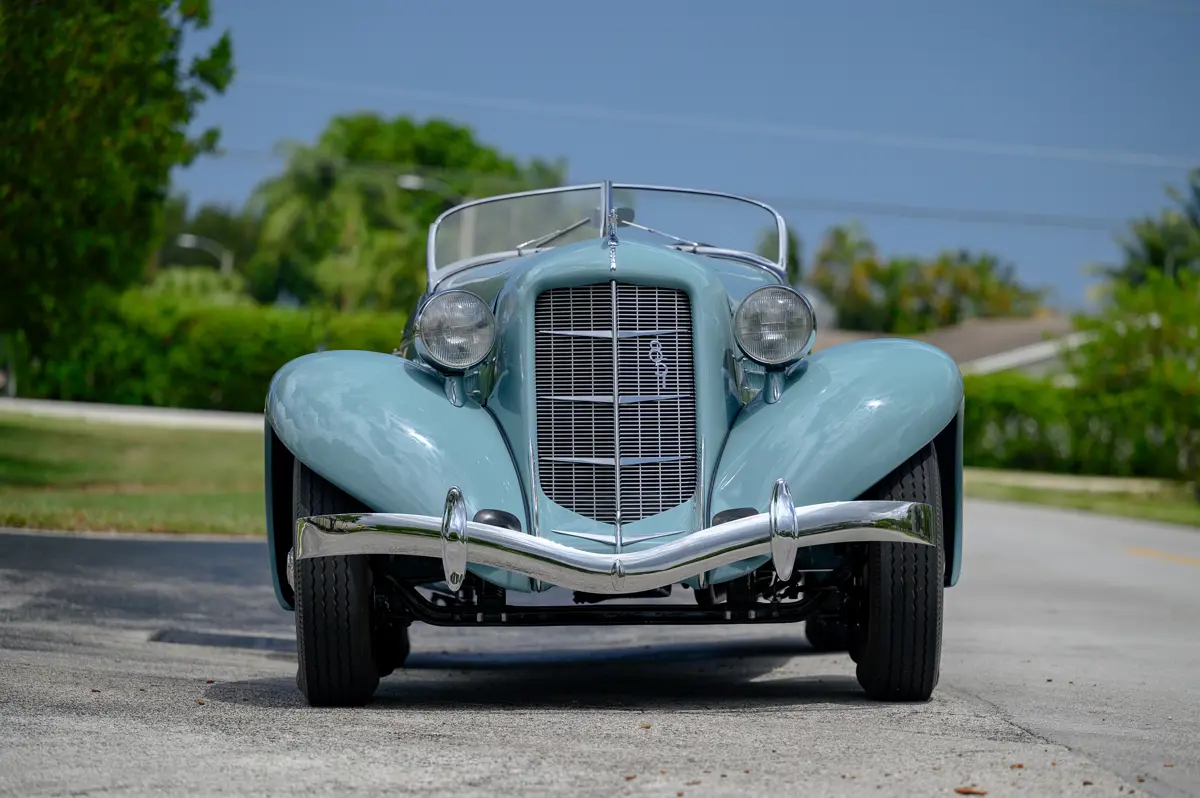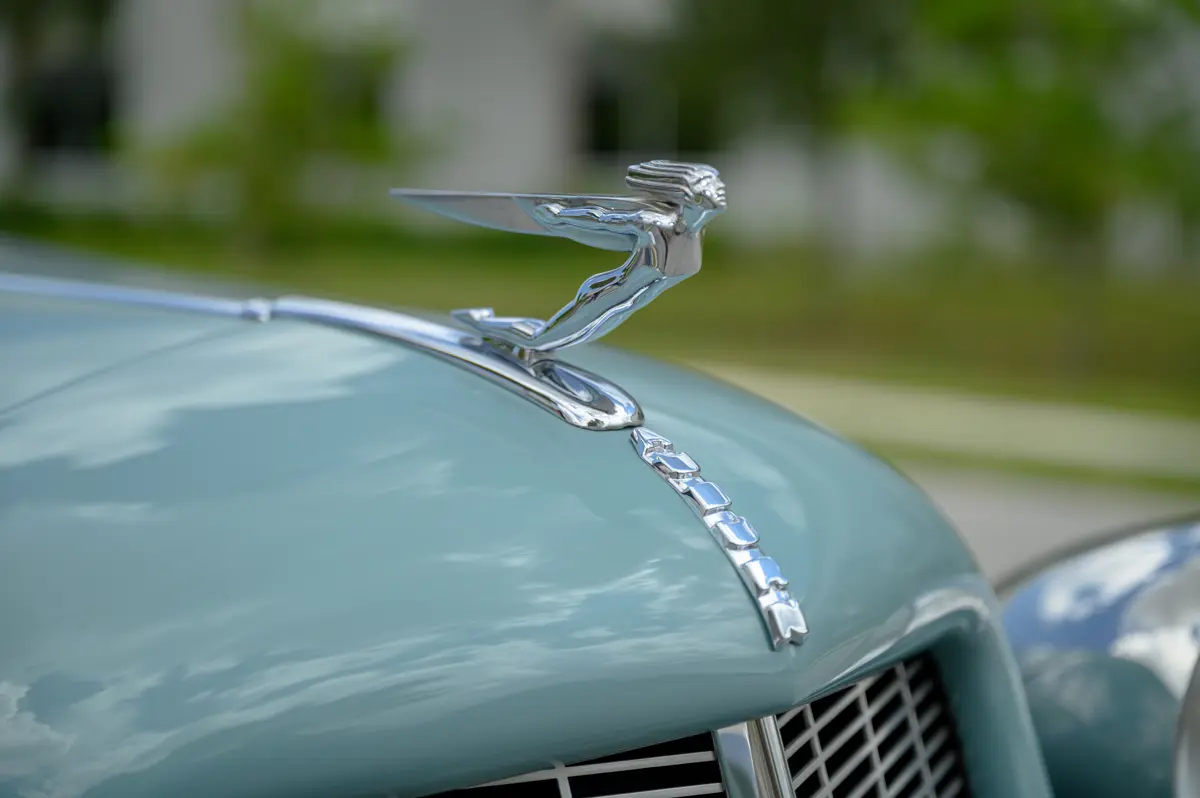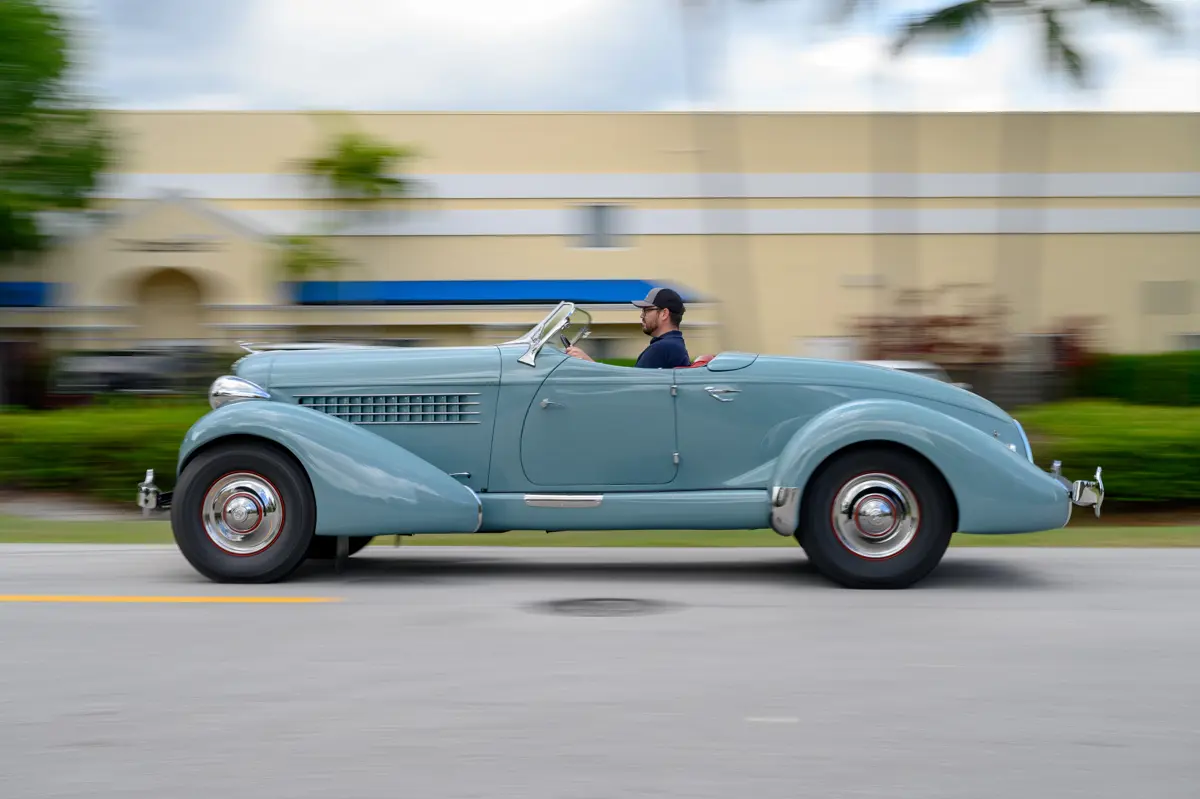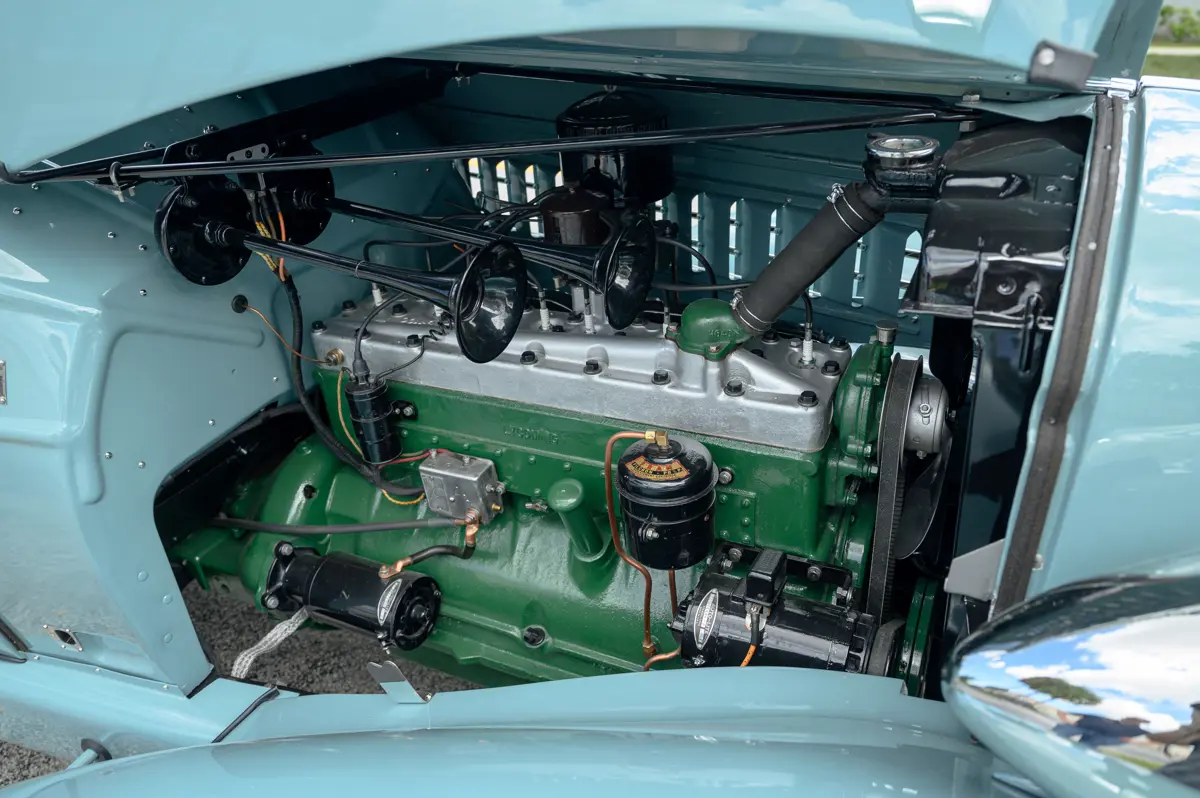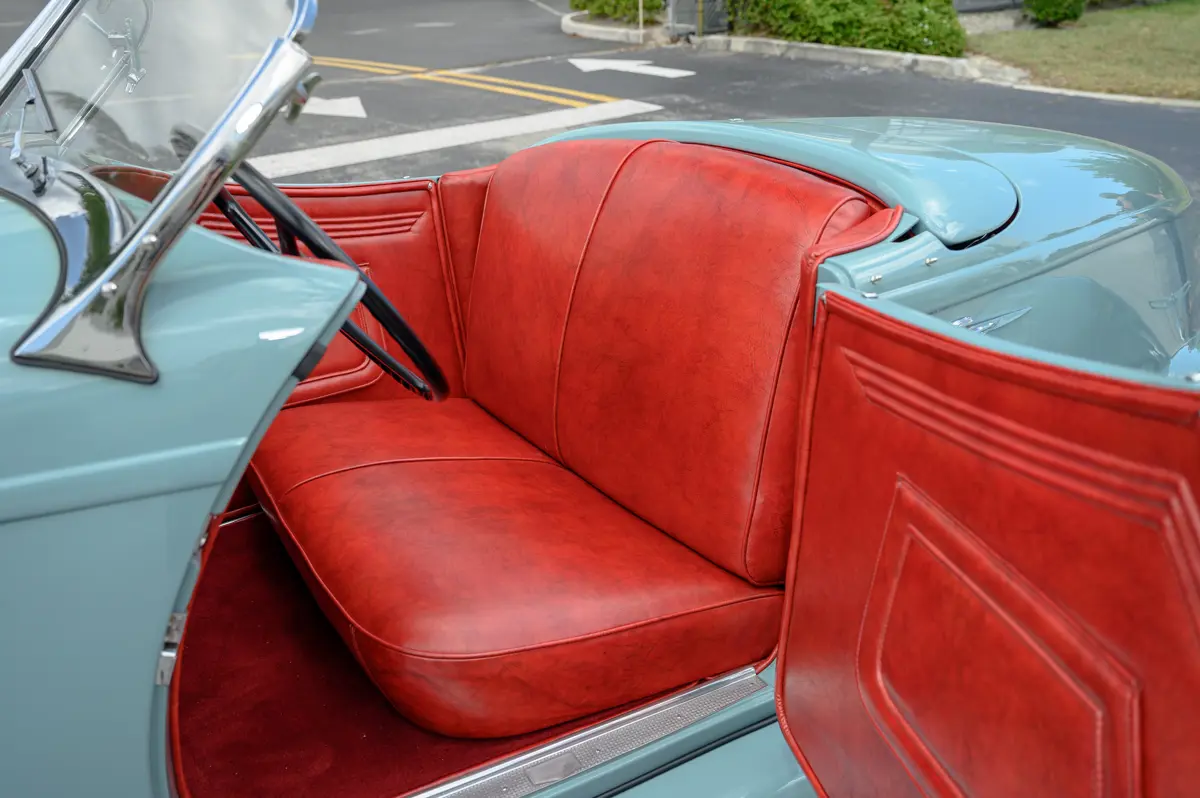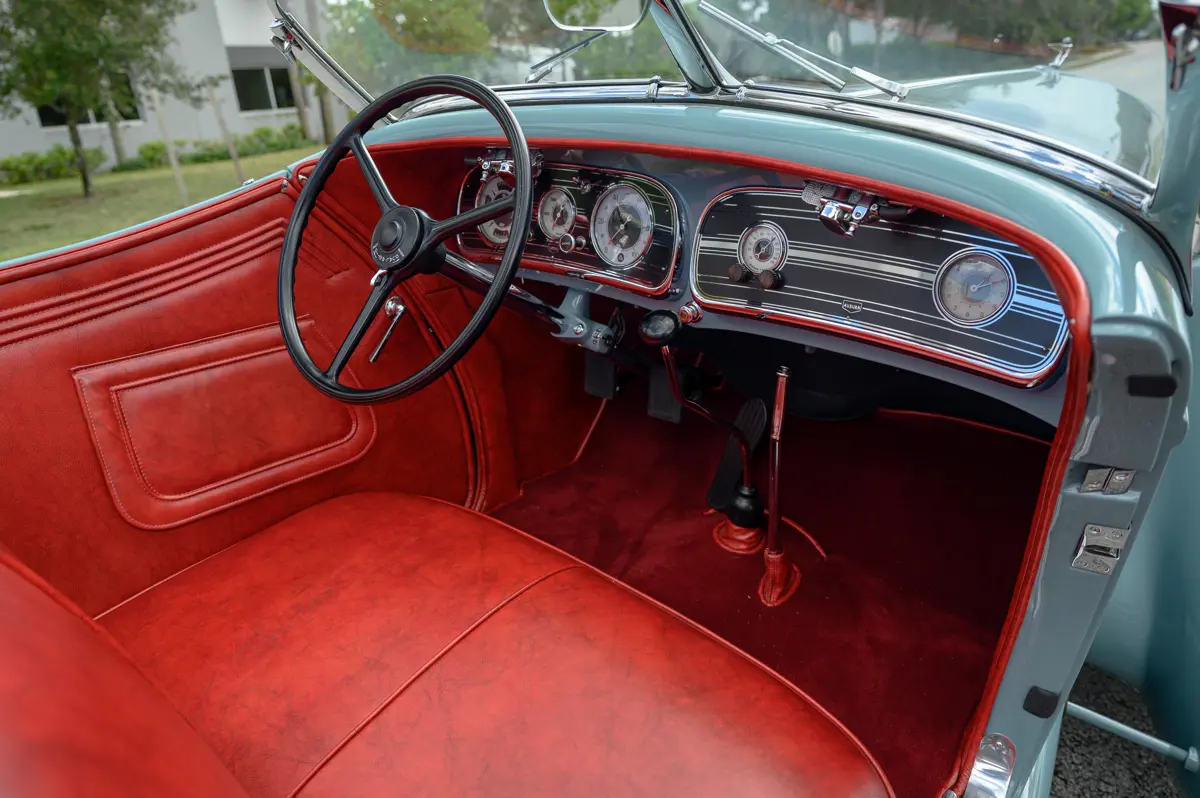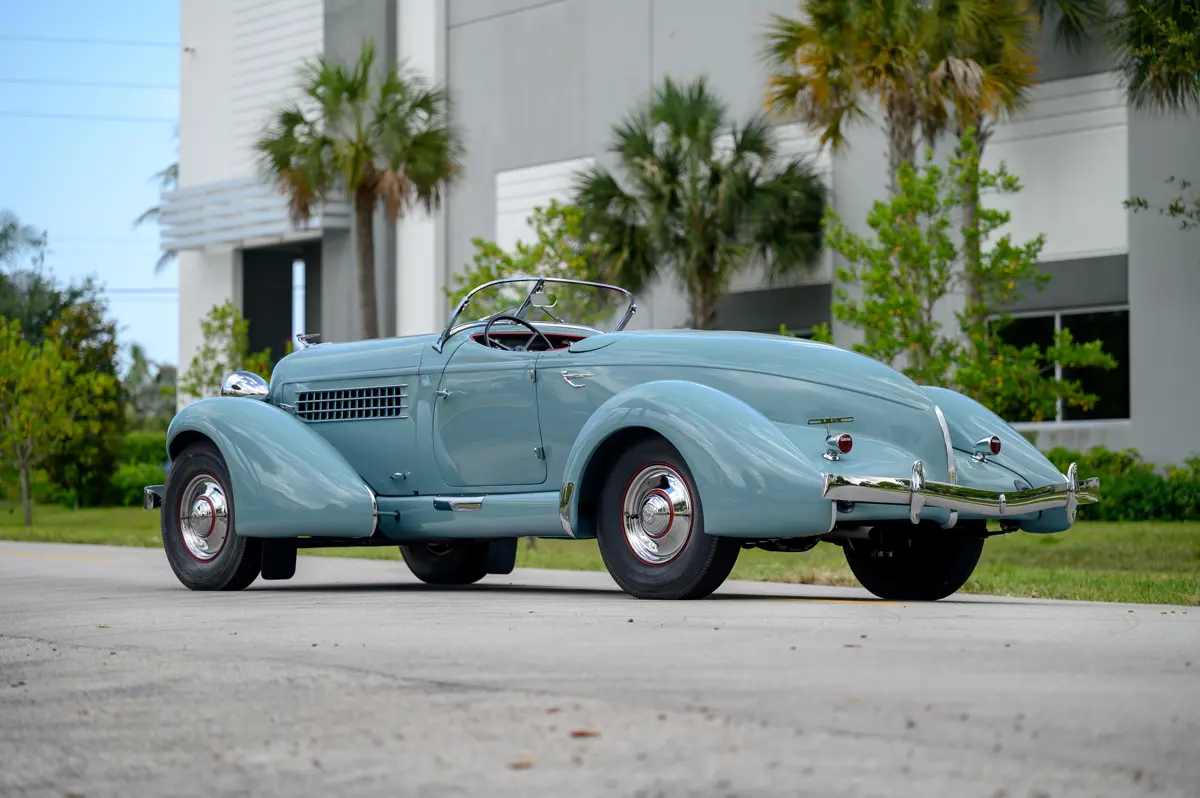In a historic part of an heirloom building, while exploring the archives of three pinnacle American car brands, Auburn, Cord, and Duesenberg, I came across Don Butler’s hand-written production tally sheet. An Auburn factory administrator, Butler methodically accounted for each Auburn produced, including a few prototypes. Lo and behold, the reference to a single un-supercharged Custom Speedster caught my eye. At that moment, so many questions raced through my mind. Why was it built? Who first owned it? Where is it now? Fortuitously, that very Speedster will be up for auction at this year’s Monterey auction.
It has been said that the Auburn Speedster is a byword for performance and image. The Speedster was the supercar of its day, possessing all the flair and style associated with such automobiles. But the Speedster was not a whim and a fancy. When its final incarnation was introduced in 1935, it was the ultimate culmination of Auburn and E.L. Cord’s vision of speed and style.
It was the Speedster that gave me my first glimpse into the golden era of automobiles when I was merely eight years old. I stared in wonder at a watercolor image stretched across two pages of my first book on automobiles. Most other cars in the book were relegated to a corner of the page. I thought from that point on, that Auburn alone built the Speedster and that the two names were synonymous. Another twenty-six years later, I found myself with the dream job of many automobile history enthusiasts: I was the new curator of the Auburn Cord Duesenberg Automobile Museum. For many, those marques stand for some of the most unique, innovative, and sought-after motor cars.
Soon after discovering the un-supercharged Custom Speedster in the ACD archives, I was enmeshed in the preparation of the Museum’s future “Racers and Record-Setters” gallery, graciously and enthusiastically sponsored by the great car collector, Terence E. Adderley. While engulfed with this project, I learned the full story of Auburn and E.L. Cord’s love for speed. Auburn’s performance prowess was a carefully crafted image before the meteoric arrival of the Speedster.
The moment the very first motor cars were introduced to the world at the turn of the 20th Century, performance became a new form of competition. Performance was viewed in several different ways—speed, endurance, handling, and even fuel mileage.
As a result, Auburn began taking part in competition early in its life. By 1910, it had gained a victory for the company at the Oklahoma Fair Grounds, racing against such lauded makes as the Knox. Across America, Norman DeVaux did a time trial up the unpaved, rugged California coast to demonstrate to the masses that the Auburn was a durable automobile. The Company and its dealers hoped these events would translate into popularity and sales.
In 1912, Auburn introduced its first performance image model, the Runabout. This Runabout was described as a light, basic style with no windshield, no top, no doors, and only a single row of seats. Not only did they provide a cheaper conveyance, but they also allowed automakers to provide a performance-oriented machine without the need to develop specialized drivetrains and equipment. With the Runabout’s introduction, Auburn had a lightweight and inexpensive car that gave amateur racers a fast steed—both in image and performance.
The Auburn Roadster, introduced after the end of WWI, was a two-passenger, open-body without side windows. The Roadster had a more practical theme than the Runabout. It featured doors for protection of the passenger compartment and also a folding top that barely kept out the elements. By 1927, Auburn took a roadster to the Atlantic City Speedway to break speed and endurance records set by the American Automobile Association (AAA).
1928 would be a red-letter year for Auburn with their unveiling of the legendary Speedster. It was a showstopper for both the press and the public. Never created for mass production, the flashy Speedster lured potential buyers into the showroom. The Speedster’s sophistication rubbed off on the more sedate passenger cars it was parked next to and gave buyers a sense of confidence in their purchase of a sedan. Auburn’s in-house racing driver, Wade Morton, used a Speedster to great effect in many road races, including a run up the famed Pikes Peak in Colorado.
Auburns were chosen by amateur racers worldwide. From the dry-lake beds of the Australian Outback to serpentine mountain roads in the Swiss Alps, Auburns were put to the test. I had the honor to prepare an exhibition featuring a 1932 Auburn Speedster “12.” This was affectionately named “Beelzebub,” which the Collier brothers promoted throughout their racing career. Reading their logbook from the 1933 International Alpine Trial was harrowing. From running into cattle to filling a leaky coolant system with mountain stream water, the abuse both Colliers and the Speedster went through was a testament to their fortitude and the Auburn’s durability.
It was finally in the heady days of 1935 that the Speedster cemented its legacy. Famed endurance driver Ab Jenkins took to the wheel of the Speedster on the Bonneville Salt Flats, shattering 70 speed records. Auburn’s marketeers emblazoned posters and brochures with images of the Speedster and the phrase “the world’s fastest stock car.” Who was to argue with them? But like a star at the very end of its life, the Auburn Speedster burned bright and then disappeared. Maybe that is what had to happen to make the Speedster the legend it is today.
When you visit the ACD Auto Museum in Auburn, Indiana, take the time to stroll through the “Racers and Record-Setters” gallery and pick up a copy of the photobook of the same name sold in the Museum Store. Both will show you Auburn’s performance story and the tenacity and insanity of early motorsports. The Auburn Speedster truly deserves to be a byword for performance.


